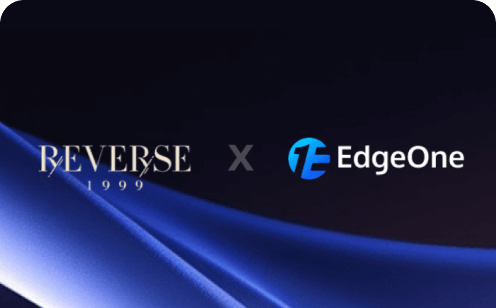Budget CDN Solutions for Small Businesses in 2025
Website performance directly impacts business success - every second of load time can mean the difference between converting a customer or losing them to a competitor. Content Delivery Networks (CDNs) have long been the secret weapon of large corporations to deliver lightning-fast experiences to their users, but many small business owners still believe this technology is beyond their financial reach.
The good news? 2025's CDN market has evolved dramatically, with providers now offering robust solutions specifically tailored to small business budgets and needs. These affordable CDN options deliver impressive performance improvements without the enterprise-level price tags that once made them inaccessible.
This comprehensive guide will walk you through everything small business owners need to know about implementing cost-effective CDN solutions in 2025. From understanding the true ROI of CDN investment to comparing the most budget-friendly providers, we'll help you navigate this technical landscape with confidence and find the perfect balance between performance and affordability.

Why Small Businesses Need CDN Services?
1. Website Performance and Its Impact on Conversion Rates
Studies consistently show that website loading speed directly impacts user behavior and business outcomes. According to recent data, a mere one-second delay in page response can reduce conversions by up to 7%. For small businesses operating on thin margins, this performance gap can be devastating.
A CDN addresses this challenge by distributing your website content across multiple global servers, significantly reducing loading times regardless of where your visitors are located. For small businesses targeting regional or international customers, this global reach is invaluable but previously came with prohibitive costs.
2. Unique CDN Needs for Small Businesses
Small businesses face distinct challenges when implementing technical solutions:
- Limited IT resources and technical expertise
- Tighter budgets with less room for experimentation
- Need for simple, manageable solutions that don't require dedicated staff
- Irregular traffic patterns that make some enterprise pricing models inefficient
Modern budget CDNs have evolved to address these specific pain points, offering simplified setup processes, transparent pricing, and scalable solutions that grow alongside your business.
3. Cost-Benefit Analysis
When evaluating CDN solutions, small businesses must consider both direct costs and potential returns:
- Direct benefits: Faster page loads, reduced server costs, improved security, and better handling of traffic spikes
- Indirect benefits: Lower bounce rates, higher search engine rankings, improved user experience, and increased conversion rates
- Cost considerations: Monthly fees, bandwidth charges, setup complexity, and ongoing management needs
Our analysis shows that small businesses implementing appropriate CDN solutions typically see ROI within 3-6 months through a combination of increased conversions and reduced infrastructure costs.
Planning Your Small Business CDN Budget
1. Determining Reasonable CDN Expenditure
While enterprise businesses might allocate thousands of dollars monthly for content delivery, small businesses need more conservative approaches. As a general guideline, consider allocating:
- Startups/Solopreneurs: 1-2% of your digital infrastructure budget
- Established small businesses: 2-4% of your web performance budget
- Growing e-commerce businesses: 3-5% of your online operations budget
These percentages should be adjusted based on how central your website is to revenue generation. A small online store would justify higher CDN investment than a simple informational business website.
2. Traffic Estimation and Cost Calculation
Most CDN providers base their pricing on bandwidth usage and request volume. To estimate your needs:
- Check your current monthly bandwidth usage in your hosting dashboard
- Add 20-30% growth buffer for unexpected traffic spikes
- Consider seasonal fluctuations relevant to your business
- Evaluate typical file sizes (particularly important for image-heavy or video-focused sites)
Many budget CDN providers offer calculators to help estimate costs based on these factors. For most small businesses with moderate traffic (under 50,000 monthly visitors), expect to pay between $5-25 per month for essential CDN services.
3. Strategies to Avoid Hidden Fees
Budget CDN solutions can sometimes include unexpected costs that derail carefully planned budgets:
- Overage charges: Understand how providers handle traffic exceeding your plan limits
- Regional pricing: Some CDNs charge premium rates for certain geographic regions
- Feature upsells: Distinguish between essential features and premium add-ons
- Support tiers: Budget plans often include limited support options
- Contract commitments: Some lower advertised rates require annual commitments
Look for providers offering grace periods for unexpected traffic spikes and transparent pricing calculators that help forecast costs under different scenarios.
Best Budget-Friendly CDNs for Small Businesses
1. Providers with Basic Plans Under $10/Month
Based on our comprehensive analysis in Cheap CDN Services 2025, several CDN providers have carved out specific offerings for small businesses with competitive pricing under $10 monthly:
- EdgeOne: Starting at just $0.9/month, EdgeOne offers exceptional coverage in Asia-Pacific regions with enterprise-grade security features.
- KeyCDN: With a minimum monthly spend of $4, KeyCDN provides a straightforward, developer-friendly solution. Their intuitive dashboard is particularly suitable for technical beginners.
- BelugaCDN: Offering plans from $5/month, BelugaCDN delivers a balance of performance and affordability with a focus on ease of use.
- BunnyCDN: Starting at just $1/month, BunnyCDN offers one of the most cost-effective entry points with surprisingly robust performance.
- LightCDN: Supporting a pure pay-as-you-go model with no minimum fees, LightCDN offers flexible pricing that scales with your usage.
2. CDN Services with Free Tiers
For businesses just starting out, these providers offer valuable free tiers:
- Cloudflare: Their free tier remains one of the most generous in 2025, including basic CDN functionality, limited DDoS protection, and a shared SSL certificate.
- Amazon CloudFront: AWS CloudFront offers a generous Free Tier that includes 1TB of outbound data transfer and 10 million HTTP/HTTPS requests per month at no cost, making it an excellent choice for small projects and startups. This permanent free tier allowance continues even after the initial 12-month AWS Free Tier period expires.
- jsDelivr: Completely free for open-source projects and provides limited free usage for small commercial projects.
- Unpkg: Focused on JavaScript packages but offers free CDN services suitable for some small business applications.
Essential CDN Features for Small Businesses

1. Necessary vs Luxury Features
Small businesses should focus on core functionality rather than advanced features that drive up costs:
Essential Features:
- Global content distribution (at least coverage in your target markets)
- Basic caching controls and cache invalidation
- HTTPS support
- Simple implementation process (ideally plugin-based for common CMSs)
- Adequate dashboard for monitoring basic metrics
Nice-to-Have Features:
- Image optimization
- Basic security protections
- Simple purge and update mechanisms
- Custom rules for content types
Luxury Features Small Businesses Can Usually Skip:
- Advanced WAF (Web Application Firewall) capabilities
- Real-time streaming optimization
- Advanced analytics
- Edge computing capabilities
- Multi-CDN orchestration
2. SSL Support and Security Features
Even budget CDN solutions should provide essential security features:
- Shared SSL certificates: Most affordable CDNs now include shared SSL at no additional cost
- Custom SSL integration: Look for providers allowing custom certificate installation without excessive fees
- Basic DDoS protection: Entry-level mitigation is increasingly standard
- Content security policies: Simple implementation of security headers
These basic security features provide significant protection without the cost of enterprise-grade security solutions.
3. Ease of Use and Technical Support Assessment
For small businesses with limited technical resources, usability should be a top priority:
- Implementation simplicity: One-click integrations with WordPress, Shopify, and other common platforms
- Dashboard intuitiveness: Clear metrics and settings without overwhelming complexity
- Documentation quality: Comprehensive, updated guides written for non-technical users
- Support channels: Availability of email, chat, or community support even on budget plans
- Response times: Check review sites for actual customer experiences with support response times
Industry-Specific CDN Solutions
1. CDN Requirements for Local Service Businesses
Service-based businesses typically have simpler websites but still benefit from CDN implementation:
- Priority needs: Fast loading of location pages and contact information, local server presence
- Cost-effective options: KeyCDN's pay-as-you-go model works well for lower-traffic service business sites
- Strategic focus: Prioritize CDN nodes in geographic regions matching your service areas
2. CDN Choices for Small Content Creators
Blogs, podcasts, and small media sites have content-heavy requirements with budget constraints:
- Critical features: Media file optimization, social media sharing speed, reliable video delivery
- Budget-conscious options: Bunny CDN's volume-optimized plans for media content
- Implementation strategy: Focus CDN resources on largest media files while handling text content through standard hosting
Transitioning from Free to Paid CDN Plans
1. Growth Indicators and Transition Timing
Knowing when to upgrade from free to paid CDN services helps maximize value:
- Traffic thresholds: Consider upgrading when reaching 70-80% of free tier limits
- Performance needs: Transition when site performance metrics show degradation under increased load
- Business milestones: Align CDN upgrades with business growth phases and funding events
- Feature requirements: Move to paid tiers when specific business needs demand features unavailable in free plans
2. Smooth Migration Strategies
To ensure seamless transition between CDN providers or plans:
- Run parallel implementations during testing
- Gradually shift traffic percentages using DNS settings
- Monitor performance metrics closely during transition
- Prepare cache warming procedures to prevent performance dips
- Document current configuration settings before migration
3. Long-term Cost-Effectiveness Planning
Build a sustainable CDN strategy that scales with your business:
- Negotiate volume discounts for anticipated growth
- Schedule regular CDN performance and cost audits
- Consider hybrid approaches using free tiers for non-critical content
- Evaluate multi-year contracts only after validating performance
- Factor CDN costs into product pricing and digital marketing ROI calculations
Conclusion
In 2025, small businesses no longer need to choose between performance and affordability when it comes to content delivery. The democratization of CDN technology has created a vibrant marketplace with options suitable for even the most budget-conscious organizations. By focusing on essential features, accurately estimating needs, and choosing the right provider for your specific business type, you can implement a CDN solution that delivers enterprise-level performance improvements at a fraction of enterprise-level costs.
Remember that CDN implementation should be viewed as an investment rather than an expense. When properly deployed, these services typically pay for themselves through improved user experience, higher conversion rates, and reduced burden on primary hosting infrastructure.
For businesses looking for an optimal balance of performance and cost, EdgeOne delivers exceptional results. With its extensive global network of over 3,200 nodes worldwide, advanced security features including DDoS protection and web protection, and affordable pricing starting at just $0.9 per month, EdgeOne makes enterprise-grade content delivery accessible to businesses of all sizes.
Ready to accelerate your content delivery while keeping costs under control? Start your EdgeOne free plan trial today and get 1TB of data transfer included. Experience enterprise-level CDN performance without the enterprise-level price tag.
FAQs
Q1: How much should a small business expect to pay for CDN services in 2025?
A1: Most small businesses can find effective CDN solutions between $5-25 per month, with several providers offering limited free tiers for businesses just starting out.
Q2: Is implementing a CDN technically difficult for a small business without IT staff?
A2: Modern budget CDNs offer simple implementation through one-click integrations with popular platforms like WordPress and Shopify, making technical expertise largely unnecessary for basic setup.
Q3: What's the main benefit of using a CDN for a small business website?
A3: The primary benefits are faster page loading times (which improves conversion rates) and better handling of traffic spikes without expensive server upgrades.
Q4: Should small businesses start with a free CDN or immediately invest in a paid solution?
A4: Free CDN tiers are perfectly adequate for testing the technology or for very small websites, but businesses should plan to upgrade once they reach 70-80% of free tier limits or when they need e-commerce-specific features.
Q5: How much improvement in website speed can a small business expect after implementing a budget CDN?
A5: Small businesses typically see 30-50% improvement in loading times after implementing even budget-friendly CDN solutions, with the most dramatic improvements for visitors geographically distant from your hosting server.

